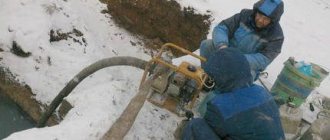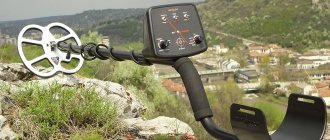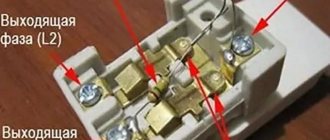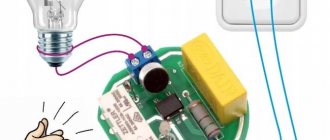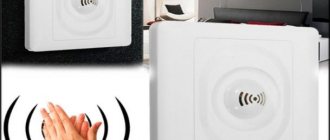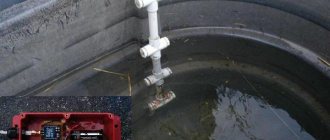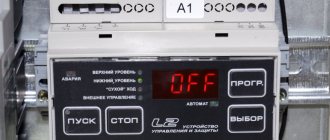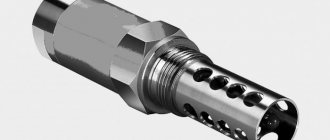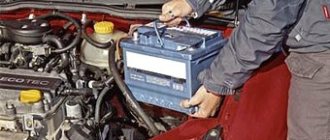Pros and cons of a homemade device
Advantages of a homemade float dispenser:
- simplicity of design;
- manufacturing requires a minimum of tools;
- assembly is completed in a matter of minutes;
- if the float fails, you can quickly make a new one;
- You can get a homemade float for free, you only have to buy tablets.
Disadvantages of a homemade float:
- it is necessary to first calculate the number of tablets and select a suitable container for making a float;
- you will have to independently control the pH level and composition of the water;
- If you accidentally turn the float over, water will get into it and it will sink to the bottom.
Most of the disadvantages also apply to factory dispenser floats. Their only advantage is greater stability. However, it is not difficult to restore the buoyancy of a homemade dispenser - you need to lift it from the bottom and pour out a certain amount of water.
Float switch for water level control
The space of one such tank is sufficient to accommodate several floats, and they can solve various problems:
- Monitor the operation of the main pump;
- Ensure efficient operation of the auxiliary pump;
- Act as an emergency level sensor;
- Use as an overflow sensor.
Using similar water level control devices that are used in these systems, it is possible to protect the pumping apparatus from going into “dry running” mode. Also, in the case of filling different tanks, this element allows you to protect them from overflow.
There are several types of floats for pumps:
The first ones became widespread in water supply and wastewater systems. The latter are mostly used as part of drainage, fecal and rainwater runoff. In stores, these devices are offered with cable lengths of 2, 3, 5 and 10 meters.
The best float switches
The main purpose of these devices is to protect pumping equipment from dry running. The float switch can also act as an emergency level sensor and will be useful for preventing overflows.
1
WWQ FS-100
Reliable and affordable device
The WWQ switch is suitable for use in a well or well in the yard of a private house.
Find out the price
Reasons to buy:
- degree of protection - IP68;
- easy connection;
- durable materials;
- low price.
One of the features of the model is the increased cable length, which allows you to control the water level at a significant depth. Reinforced insulation guarantees safe operation and durability of the device.
The maximum ambient temperature is 35°C, current consumption is 16 amperes. The switch is not afraid of frequent voltage drops, therefore it is characterized by stable operation.
READ ALSO
20 Best Fishing Lines
2
Grundfos MS1 Ex/20 m
Increased security
This float is suitable for use in production conditions. It can be installed in a wastewater treatment plant or oil refinery.
Find out the price
Reasons to buy:
- long cable;
- easy connection;
- high protection class;
- stable work;
- heat resistance.
This model is explosion-proof. The sensor is manufactured in accordance with international standards and is not afraid of operation in unstable environments or conditions of elevated temperatures. The protection class corresponds to IP68.
The total weight of the set is 2.28 kilograms. The cable length is 20 meters, which guarantees the convenience of connecting the float switch to remote systems. The reinforced junction area further increases the reliability of the sensor.
3
Wilo MS 1
A universal solution for aggressive environments
Wilo MS is designed for installation in a tank or well. Can be used with pumps for draining groundwater, wastewater, fecal water, as well as when pumping working fluids of any degree of contamination.
Find out the price
Reasons to buy:
- durable materials;
- reinforced insulation;
- heat resistance;
- long cable;
- works even in an inclined position.
The body of the model is made of dense polypropylene, which provides it with resistance to sharp impacts, chemical and thermal effects. The maximum permissible liquid temperature is 80°C. The material is not afraid of use in oil, gasoline, alcohol and other aggressive environments, which expands the possibilities of using the device.
Cable length is 10 meters. The insulation is made of PVC, does not lose shape when stretched and does not wear out, due to which it maintains quality for a long time.
4
Unipump float switch 74528
Reinforced design
Such a sensor can be used in private water supply systems and work with household pumps.
Find out the price
Reasons to buy:
- high strength;
- dense insulation;
- easy installation.
The model has a durable plastic case and meets a higher protection class, which ensures its reliability and durability. The ability to work in water with temperatures up to 60 degrees expands the scope of use of the device.
The cable length is 3 meters. The switch is supplied with a weight, thanks to which you can quickly set the moment of operation of the contact group and begin operation.
READ ALSO
7 best pH meters
5
AquamotoR AR PC-8A
Economical sensor
This inexpensive model is worth purchasing to control the liquid level in a pool, septic tank or shallow well. A reliable choice for a private home or cottage.
Find out the price
Reasons to buy:
- low price;
- easy connection;
- dense insulation;
- strong body.
A weight is included with the model, which allows you to quickly start using the switch. A high protection class guarantees stable operation and reliability of the sensor.
The maximum permissible ambient temperature is 60°C, the rated current is 10 amperes. The durable housing is resistant to damage and wear. Reinforced cable insulation provides additional safety.
Step-by-step manufacturing instructions
Making a dispenser float is a simple task, quite accessible to anyone, even without special training.
There is no need to do complex operations here; you can use any containers. The only condition will be the presence of a tight-fitting lid and a size that can accommodate the required amount of chemicals.
The first step is to calculate the amount of chemicals that should be in the float. Here the main criterion is the volume of water in the pool, on the basis of which the dosage is calculated.
Then you need to select the float body.
Capacity requirements:
- Tight-closing lid.
- Size sufficient to fit inside the tablet.
- A material that can be drilled or burned through with a heated metal object.
The best option is a plastic pill jar. It has the right size, the lid is threaded, and the plastic can be drilled without problems (or holes can be made in any other way).
If you don’t have such a jar at hand, you can use any similar jar. Some users make do with a regular plastic drink bottle of 1-1.5 liters.
Tools and materials
Before starting work, you need to prepare everything you need:
- a plastic container with a closing lid;
- electric drill and drill with a diameter of 5-10 mm.
If you don’t have an electric drill, or you don’t have the skills to handle this tool (drilling holes in a plastic can is a rather dangerous activity), you can make holes in any other way:
- Burn them with a hot metal object (soldering iron, heated nail, awl, etc.).
- Poke holes with a sharp tool.
- Use a special punch - a tube with a pointed end edge (this option is only suitable for jars with a wide neck, so that you can rest the container from the inside on a wooden stand).
The most unreliable option is to pierce holes. They will be small in size, preventing the dissolved drug from entering the water in sufficient quantities. The best option is to burn holes.
You can make holes using a semicircular wood cutter (if you have one). They will have a sufficient diameter for good water passage.
In this way, you can make oblong holes, like on factory dispensers. They best ensure the free movement of water in and out of the container.
Drawing and its decoding
Let's look at what the diagram of a simple homemade float from a pill jar looks like:
1 - cover. It must close tightly to prevent air from escaping. 2 - can body. 3 - holes with a diameter of 5-10 mm.
If a bottle or other container is used instead of a can, nothing fundamentally changes. The main condition is to ensure the buoyancy of the hull, for which the holes are made no higher than half its height.
The vertical position of the housing will be ensured by the tablets themselves, which are located in the lower part of the container. When they dissolve, the float may turn over on its side. There is nothing wrong with this, but if necessary, you can attach a small weight to the bottom. It will stabilize the float whether there are tablets in it or not.
Stages of work
Procedure:
- Rinse the container prepared in advance, inside and out, and remove the paper or plastic label.
- Using a convenient and accessible tool (drill, soldering iron, cutter), make holes in the bottom and lower part of the case walls. The holes should not be located above the middle of the container, otherwise there will be too little air left in it and the float will sink to the bottom.
- The number of holes should be sufficient for the free movement of water. The more there are, the better. However, it is necessary to ensure sufficient strength so that the housing does not collapse and the chemicals cannot fall out.
When the holes are ready, the manufacturing process can be considered complete. The only addition would be to seal the lid threads so that air does not escape through the leaks.
You can wrap it with a couple of turns of FUM tape or apply a little candle wax and screw on the lid. The wax will harden and make the connection fairly airtight.
DIY pool float, video instructions:
Difficulties that arise and tips for eliminating them
Being aware of the peculiarities of the functioning of the tanks and, of course, the float itself, you can make adjustments without any difficulties. Most often, the float breaks in several cases.
Sometimes the water supply to the tank completely stops. In other situations, water continues to rise after reaching the optimal level.
The design of the floats, depending on the type of toilet model, may differ significantly. Some floats are hollow and hermetically sealed.
Often designs are designed that resemble an ordinary inverted glass. If the structure is hollow, when liquid enters the device completely loses its functional features.
The second float option most often fails when too much dirt accumulates in it. In this case, you can simply perform the cleaning procedure and the float valve of the side-facing toilet mechanism will work normally.
Homemade float switch
If you have the time and desire, then you can make a simple float water level sensor with your own hands, and the costs for it will be minimal.
Mechanical system
In order to simplify the design as much as possible, we will use a ball valve (faucet) as a locking device. The smallest valves (half-inch or smaller) work well. This type of faucet has a handle that closes it. To convert it into a sensor, you need to extend this handle with a strip of metal. The strip is attached to the handle through holes drilled in it with the appropriate screws. The cross-section of this lever should be minimal, but it should not bend under the influence of the float. Its length is about 50 cm. The float is attached to the end of this lever.
You can use a two-liter plastic soda bottle as a float. The bottle is half filled with water.
You can check the operation of the system without installing it in the tank. To do this, install the faucet vertically and place the lever with the float in a horizontal position. If everything is done correctly, then under the influence of the mass of water in the bottles, the lever will begin to move down and take a vertical position, and the valve handle will turn with it. Now submerge the device in water. The bottle should float up and turn the valve handle.
Since valves vary in size and the amount of force required to switch them, the system may need to be adjusted. If the float cannot turn the valve, you can increase the length of the lever or take a larger bottle.
We mount the sensor in the container at the required level in a horizontal position, while in the vertical position of the float the valve should be open, and in the horizontal position it should be closed.
Float water level sensor - hysteresis check
Hello friends! A short review of a float water level sensor for a tank, barrel, aquarium, etc. More precisely, not even a review of the sensor itself, but checking its hysteresis during operation - in fact, an important parameter that is not written about anywhere... It all started when I was flooded this summer. Almost like in the famous poem by Simonov:
Do you remember, Alyosha, the roads of the Smolensk region, How the endless, angry rains fell...
Although I live not in the Smolensk region, but in the Moscow region, the rains this summer were very specific. Such that half the site stood in water. Once upon a time, a long time ago, a ditch was dug along all our plots, through which all these storm drains went into the blue distances, and we had no worries. But when the DSK was ordered to live a long time and all the land was stolen into private ownership, all these ditches were immediately filled up, creating luxurious entrances and green lawns. Nobody thought that it could rain in the summer. Therefore, they didn’t even bother with drainage pipes. Well, in general, now the water has nowhere to go, spin as you want. I decided to get out by buying a 5 cubic meter water container and pumping excess water into it from a shallow drainage well dug at the lowest point of the site.
The volume was determined by the most common volume of the auto-barrel, which will come and empty this container when it is completely filled. And in between rains, the water can be used for irrigation. To automate the filling process, I needed this float sensor. Its design is elementary.
A reed switch is installed in the fixed part, and a magnet is installed in the moving part. The water level rises, the magnet approaches the reed switch, and it closes. Everything is as simple as an orange. I will note in parentheses that if this float is turned over, it can work the other way around - if there is no water, it is closed, and when the water level rises above the float, the reed switch opens. Maybe this feature will also be useful for some applications. I have this float installed at the very top of the tank and turns off the pump in the drainage well when the tank is completely full.
Since the reed switch is a delicate thing and it is not entirely correct to directly connect the pump with it, I supply 24 V to it (from this power supply to the DIN rail https://aliexpress.ru/item/item/4000218099591.html) and then through the intermediate relay . And since the intermediate relay has a changeover contact, when the pump is turned off, a red flashing signal lamp turns on at the same time (like this https://aliexpress.ru/item/item/32817426375.html), indicating that it is time to call pumping. This warning light is in the field of view of a CCTV camera (like this one https://aliexpress.ru/item/item/32848174859.html), which is displayed on the phone (okay, that’s enough) and the system closes.
Now let's move on to the main thing. When I had already built it all, a thought came to me (well, as usual, when everything is already done...). But won’t waves on the surface of the water from the jet from the filling hose lead to chattering of the contacts of this reed switch and, accordingly, to an intermittent supply of voltage to the pump, which, obviously, will not be good for it at all.
The first and obvious solution that came to mind was to build an integrating RC filter, which would provide a delay in the operation of the relay, during which the water would rise enough for the chatter to stop. But an estimate of the values showed that the capacitor capacity for such a filter should be somewhere on the order of 50,000 uF (at 30-50 V), which in itself is no longer a cheap pleasure. And besides, it had to be somehow constructively designed, put into the shield... In short, I thought that this was not our method. Having rummaged around on Ali, I discovered that the gloomy Chinese genius had already come up with a relay with a switch-on delay, and an adjustable one, which is obtained at a price two times cheaper than one capacitor, and it is mounted on a DIN rail, there is no need to fence anything: https:// aliexpress.ru/item/item/4000660413787.html If you install such a relay instead of an intermediate one and set the response delay to 15 seconds, just during this time the water will accumulate above the float response threshold and the contact chatter will certainly stop.
Eureka, I was delighted and ordered it immediately. But... then doubts began to overcome me. What if after filling the tank the electricity goes out and then comes back on? This is a completely possible situation for a dacha, although it is highly unlikely that this will happen then. What will happen? Despite the fact that the tank is full, the pump will turn on during this 15 second delay and there will be an overflow. What if this happens several times? An absolutely unlikely situation - but we are Soviet engineers, we must foresee everything! This means we need to install a second delay relay! To delay the supply of voltage to the pump. Moreover, it should work later than the first. Well, that is, electricity is supplied, the first relay waits 15 s and opens the pump circuit, and after another 5 s the second relay supplies voltage to the (open) pump. Then everything will be fine. But it’s somehow painfully difficult...
The next idea is to put a second float, a little lower. And then, using a simple circuit using just one intermediate relay with an additional group of contacts, it will be possible to organize a self-locking circuit that will turn off the pump according to the upper float and turn it on according to the lower one. Moreover, due to self-locking, this solution completely eliminates contact bounce! But when the second float arrived, I decided to check whether it had its own hysteresis. Because when I asked the seller about this, he got the biggest eyes in China...
Well, now let’s move on to the essence of the review (everything that was above could not have been read at all, hehe). For testing, such a stand was assembled from scrap materials (it was not for nothing that I loved watching “crazy hands” with Bakhmetyev...).
Looking ahead, I’ll explain that the upper dotted line corresponds to the water level when it reaches exactly the middle of the float. The upper solid line is the reed switch closure level. The bottom solid line is the trip level. Well, that is, firstly, there really is hysteresis. Secondly, the float closes just below the middle of the float. In millimeters it looks something like this.
Well, now we offer you a short movie.
Conclusion: the grandmother had no worries, the grandmother bought a pig... It was possible not to bother with all this at all. 
And finally, a drawing indicating the response levels at different positions of this float sensor:
Operating principle of float for pumps
Devices such as float switches can provide for different schemes for their use, and this also affects their principle of operation.
Water supply system, filling and emptying tank tank tank
With this operating scheme, at the moment of ascent, the float de-energizes the pump, which supplies water to the tank. The signal to turn on will only come when it reaches the bottom. This situation occurs only when the container is empty.
The float sends a signal to turn on the automatic water supply station the moment it is on the surface. The station can be turned off only when the float sinks to the bottom when the container is empty.
From the side of the float, a signal was received to close the valve or valve with a servo drive at the moment it was raised to the surface. The valve or gate valve will open only when it sinks to the bottom when the container is empty.
The operation of the float can only consist of notifying the control center or operator at the moment it is raised to the surface, which will correspond to the filling of the container. Information about the lack of water will arrive at the moment when the float reaches the bottom.
Sewage system
The float will turn on the fecal pumping equipment only when the main control device is raised up. The pumping unit is turned on when the control device is immersed in the bottom.
One float can simultaneously serve two pumping units: the first unit can supply water to the container, provided that the float is in the lower position. At this moment, the other pump is inactive. When the float is in the upper position, the second pump is turned on, whose task is to pump water out of the tank. At this time, the pump that supplies water to the tank is inactive. Despite its simplicity, the above scheme for using a float switch is not very effective, since this does not eliminate difficulties with the regular delivery of water at those moments when the tank is filling.
Operation, repair, maintenance
Compliance with the rules for operating floats will ensure their long-term operation. When the float is included in the water supply and sanitation system, you should not waste time on its maintenance. If the device controls the operation of sewer or fecal pits, it is recommended to clean the float and pump from contaminants at least once a month with a stream of water supplied under pressure. This will prevent the float from sticking or sticking to the discharge pipe or pump. A broken float switch is replaced, and the replacement is carried out by specialists from service centers.
When it is necessary to provide drinking water or remove contaminated wastewater, special devices are used together with pumps, in particular, a float switch. Since the device prevents dry-running, the service life of the pump is increased. A lot of energy is also saved, because, thanks to the float switch, the pump is activated only when necessary.
Selecting a water level sensor in the tank and container
To automate many production processes, it is necessary to monitor the water level in the tank; the measurement is carried out using a special sensor that gives a signal when the process medium reaches a certain level. It is impossible to do without level meters in everyday life; a striking example of this is the shut-off valve of a toilet cistern or an automatic system for shutting off a well pump. Let's look at the different types of level sensors, their design and operating principle. This information will be useful when choosing a device for a specific task or making a sensor yourself.
Overview of species
There are 2 types of valves.
- Mechanical. Absolutely simple design, reliability and stability to aggressive environments, long service life.
- Electrical. Provide process automation (there is no need for human control over the work process). The device has a more complex structure compared to a mechanical valve.
Another positive point is that valves of this type do not create additional noise during operation.
Let's take a closer look at each of them separately.
Mechanical
Mechanical type regulators include a variety of devices for controlling the water level in tanks. They are the easiest way to control the maximum and minimum liquid levels in a container if the pressure in the main water supply is less than 5 bar and there is no voltage.
The principle of their operation is that the float is connected to a lever; when the liquid level changes, the float moves this lever up or down, and in response it affects the valve, which opens (closes) the liquid supply. These devices can be seen as a flush mechanism for toilet cisterns. They are quite practical to use where it is necessary to systematically add water from a centralized water supply system.
Mechanical devices have a number of positive qualities:
- simplicity of design;
- small size;
- safety;
- autonomy - do not require any sources of electrical energy;
- reliability;
- low cost;
- ease of installation and adjustment.
However, these valves have one serious drawback - they are able to control only one (upper) level, which depends on the installation location, and adjust it, if possible, within rather small limits. In stores, this valve may be called a “float valve for containers.”
Electrical
Before purchasing such equipment, you need to take some points into account. The productivity with which liquid will be drawn from the tank and the capacity of the water tank itself should be taken into account.
If productivity is low and water is used quickly, an electric type valve is the ideal solution. It is mounted on the tank together with a valve with an electromagnetic drive and a filter to purify water from mechanical impurities. This will make it possible to quickly fill the container and warm up the water in it, as a result of which the period of time between waterings will be significantly reduced.
This modification of the float valve for tanks has the following properties:
- the float mechanism is protected from moisture by an impenetrable casing;
- The wiring length is presented in 2 variations - 3 and 6 meters.
This product is often used to start/stop pump automation in the absence of water during pump operation and in the water supply pipeline. In this case, the float itself must be mounted at the lowest point of the liquid level.
To ensure against overflow, it is necessary to organize sequential installation of float valves of 2 types. The fluid level is monitored by an electrical device, and a mechanical valve serves as an additional tool. When the electrical valve malfunctions, the flow of liquid into the tank will be blocked by a mechanical device. The price of float valves for tanks is low, but at the same time they make the procedure for filling tanks automatic and quite comfortable.
Design features
A float switch for electric pumps is an element of the overall pumping station system and regulates the water level in the tank. Source nasosovnet.ru
To understand how a float switch works, you need to understand its internal structure and operating algorithms in general. An electrical switch and a lever drive are built into the polymer body of the device, which sets the contact terminals to the on/off positions. To correct the positions of the lever drive when changing positions, a steel ball is provided. A cable with three wires is connected to the device, where one goes as common (zero), and the rest are connected to the on/off system, that is, to normally closed and normally open terminals.
When the float is in the down position, the circuit is closed using the blue and black wires, that is, this is the open mode position. When the float rises up, the terminal connected to the brown and black wires closes, signaling that the container is full. Another important point is that all float switch connection diagrams provide for reliable insulation for both the cable and all wires - as a rule, it is made of polymers with various additives. In addition, mechanical sealing of the cable is provided at the junction points with nodes, and there is also a special device that compensates for mechanical stress during bending.
The internal parts of the float are protected by a sealed plastic case, which prevents contact of the electrical wiring with water Source pro-traktor.ru
Select and buy a float valve for a container or tank
12.01.2012
Using modern solutions and the necessary equipment, you can automate various processes of dacha life. Turning the well pump on and off for water supply, energy saving, heating - all these are important elements of country life.
An important factor is watering the garden, and heated water in the reservoir is the key to the health of your plants. To maintain automatic control of the water level in the tank, you will need a float valve for the tank as well as several fittings for its installation.
Let's look at the different types of these devices.
Before you buy a mechanical or electric type float valve for a tank, think about the implementation of your goals. It is necessary to take into account the productivity with which water will be drawn from the tank, as well as the volume of the irrigation tank itself.
At the same time, your tank will quickly fill and warm up, which means the time between watering cycles will be significantly reduced.
This float valve for a tank has a waterproof body and a wire of 3 or 6 meters. It can also be used to turn the automatic pump on and off during dry running by setting the float to the lowest point of the water level.
In this case, you do not have to constantly turn on the pump by hand when the automatic operation is activated during dry running. This solution is very convenient if you rarely visit the site, and the water in the village water supply runs rather slowly. The energy dependence of the system on a constant power source is perhaps the only negative.
If this is not available, you should consider a 1” mechanical type float valve.
Upon supplying the top-up pipe, a hole of 1” or 25 mm is made in the tank. The valve itself with a crimp nut and a rubber gasket is inserted into it. At the output we will get a threaded pipe for connecting the topping pipe using a fitting.
We adjust the plastic float of the valve to the maximum water level by loosening or tightening the nut on the movable float arm.
All is ready! We open the main valve to supply water to the tank; as it fills, the float will move to the upper adjusted level mark, and the valve mechanism will block the access of water to the tank.
Thus, the main control of the water level in the tank is provided by an electric float valve for the tank, and auxiliary control is provided by a mechanical float valve for the tank. In the event of a malfunction of the top-up electromagnetic valve (membrane clogged, old age, leakage, etc.)
) the mechanical valve will stop adding water to the tank when it reaches its maximum level. This method will protect the container from overflowing and unforeseen consequences for its owner.
- Aquatech mechanical float valve 1″ for regulating the filling level of the container.
- Fill level Quickstop float valve for container.
- Electric level float switch (up to 220 V) with 3-wire wire for process water
- Leave a comment Metal float valve for Farg tank with brass seat 3/4″ – 1.1/4″ (without ball!)
- Leave a comment Metal float valve for Farg tank with stainless steel seat AISI 430 3/4″ – 2″ (without ball)
- Metal float valve for Farg tank with stainless steel seat 1/2″-1″ for hot water
- Leave a comment Two-position float switch with 1-5 meter wire for drinking water
- Leave a comment TAURUS float switch with 10-20 m wire for domestic and industrial wastewater
- Leave a commentDesigned to determine the filling level of a container with liquid.
- Electromagnetic solenoid valve for water 24 V. Designed to shut off/open the water flow.
DIY float for a water tank
At home, sensors of this type allow you to automate processes such as:
- monitoring the liquid level in the supply tank;
- pumping groundwater from the cellar;
- turning off the pump when the level in the well falls below the permissible level, and some others.
Operating principle of a float sensor
An object is placed in the liquid and does not sink in it. This could be a piece of wood or foam, a hollow sealed sphere made of plastic or metal, and much more. When the liquid level changes, this object will rise or fall with it. If the float is connected to the actuator, it will act as a water level sensor in the tank.
Equipment classification
Float sensors can independently monitor the liquid level or send a signal to the control circuit. According to this principle, they can be divided into two large groups: mechanical and electrical.
Mechanical devices
Mechanical valves include a wide variety of float valves for the water level in the tank.
The principle of their operation is that the float is connected to a lever; when the liquid level changes, the float moves this lever up or down, and it, in turn, acts on the valve, which shuts off (opens) the water supply.
Such valves can be seen in toilet flush tanks. They are very convenient to use where you need to constantly add water from the central water supply system.
Mechanical sensors have a number of advantages:
- simplicity of design;
- compactness;
- safety;
- autonomy - do not require any sources of electricity;
- reliability;
- cheapness;
- ease of installation and configuration.
But these sensors have one significant drawback: they can control only one (upper) level, which depends on the installation location, and regulate it, if possible, then within very small limits. On sale, such a valve may be called a “float valve for containers.”
Electrical sensors
An electric liquid level sensor (float) differs from a mechanical one in that it itself does not shut off the water.
The float, moving when the amount of liquid changes, affects the electrical contacts that are included in the control circuit. Based on these signals, the automatic control system makes a decision on the need for certain actions.
In the simplest case, such a sensor has a float. This float acts on the contact through which the pump is turned on.
Reed switches are most often used as contacts. A reed switch is a sealed glass bulb with contacts inside. Switching of these contacts occurs under the influence of a magnetic field.
Reed switches are miniature in size and can be easily placed inside a thin tube made of non-magnetic material (plastic, aluminum). A float with a magnet moves freely along the tube under the influence of liquid, and when it approaches, the contacts are activated.
This entire system is installed vertically in the tank. By changing the position of the reed switch inside the tube, you can adjust the moment the automation operates.
If you need to monitor the upper level in the tank, then the sensor is installed at the top. As soon as the level drops below the set level, the contact closes and the pump turns on. The water will begin to increase, and when the water level reaches the upper limit, the float will return to its original state and the pump will turn off.
However, in practice such a scheme cannot be used. The fact is that the sensor is triggered by the slightest change in the level, after which the pump turns on, the level rises, and the pump turns off.
If the water flow from the tank is less than the supply, a situation arises when the pump constantly turns on and off, and it quickly overheats and fails.
Therefore, water level sensors for pump control work differently. There are at least two contacts in the container. One is responsible for the upper level; it turns off the pump. The second determines the position of the lower level, upon reaching which the pump turns on.
If the difference is more than a meter, two separate sensors are used, installed at the required heights.
Despite their more complex design and the need for a control circuit, electric float sensors allow fully automated liquid level control.
If you connect light bulbs through such sensors, they can be used to visually monitor the amount of liquid in the tank.
How to choose a float sensor
First, you should pay attention to the length of the cable - the possibility of using the device in deep tanks or wells depends on it. As a rule, a length of about 5 meters is sufficient for use at home. But in any case, we advise you to purchase a model with a certain reserve.
The maximum value of the coupling current is determined by the operating parameters of the equipment with which the sensor will be connected. For pumps, fans or compressors, you can buy a device that corresponds to 8 amps.
An important criterion is the range of operating temperatures, which affects the permissible operating conditions of the circuit breaker. In production, resistance to temperatures up to 80 degrees may be required. In a private home, a model with a range from 0 to 60°C will suffice.
A mandatory requirement for devices of this type is tightness. The cable must be made of dense materials and meet a higher protection class.
If possible, check the insulation at the entry point into the box. Also, you should not buy a sensor with visible defects in the housing.
